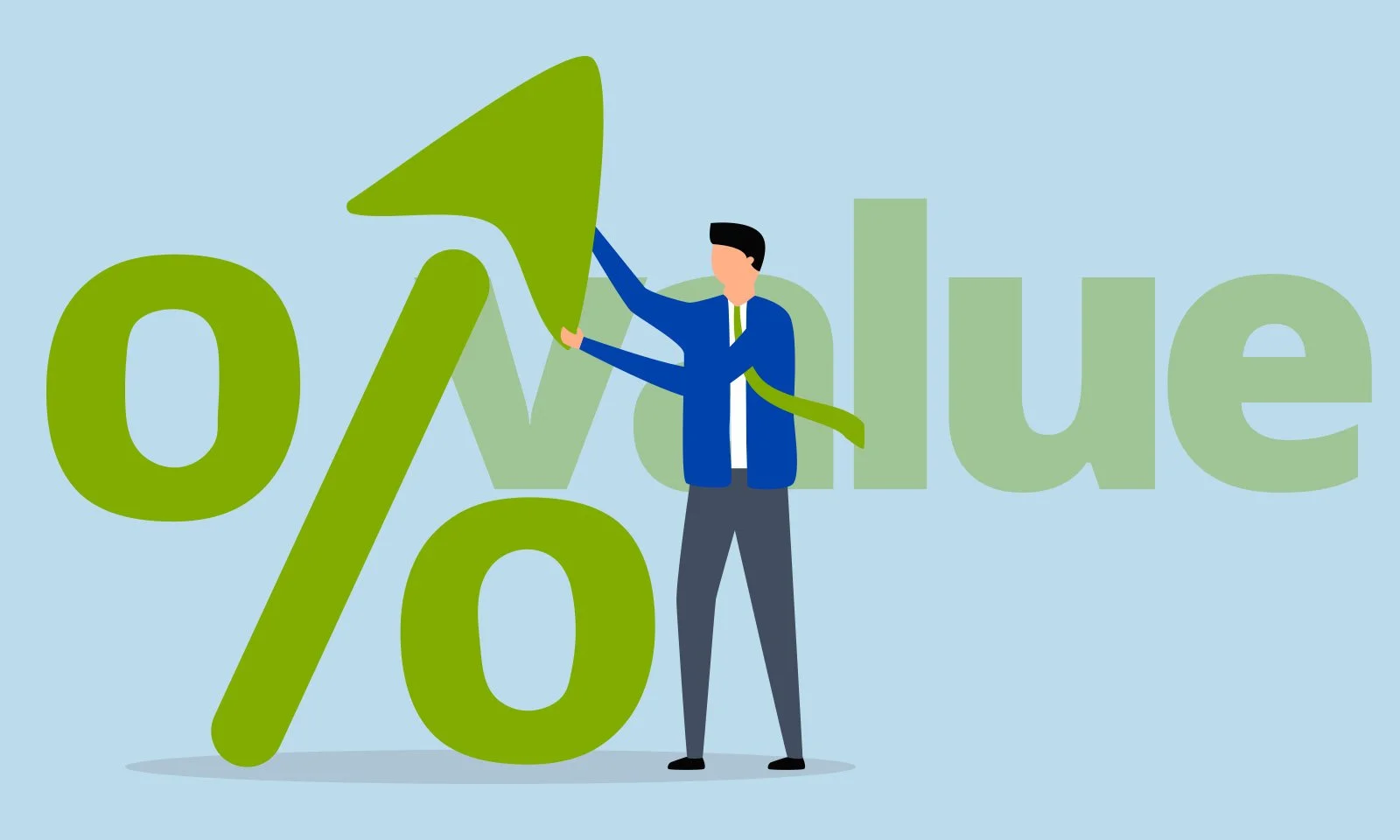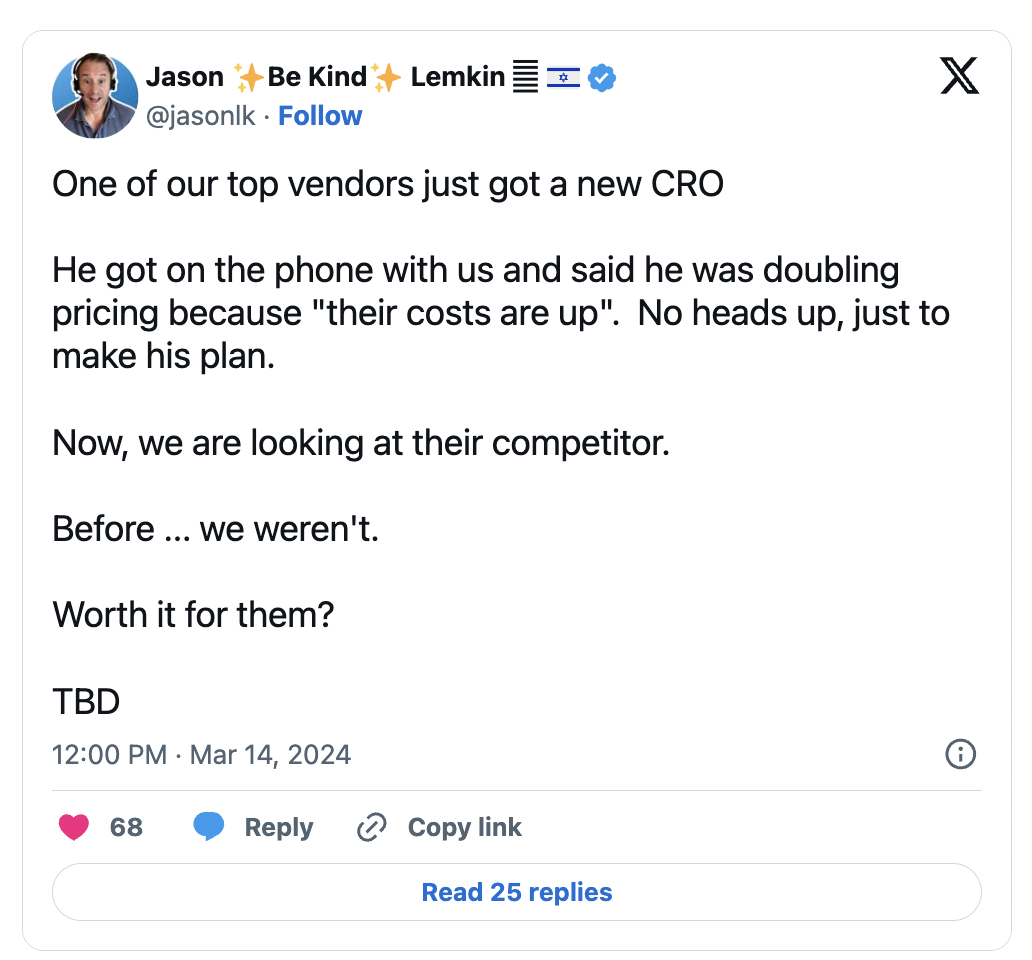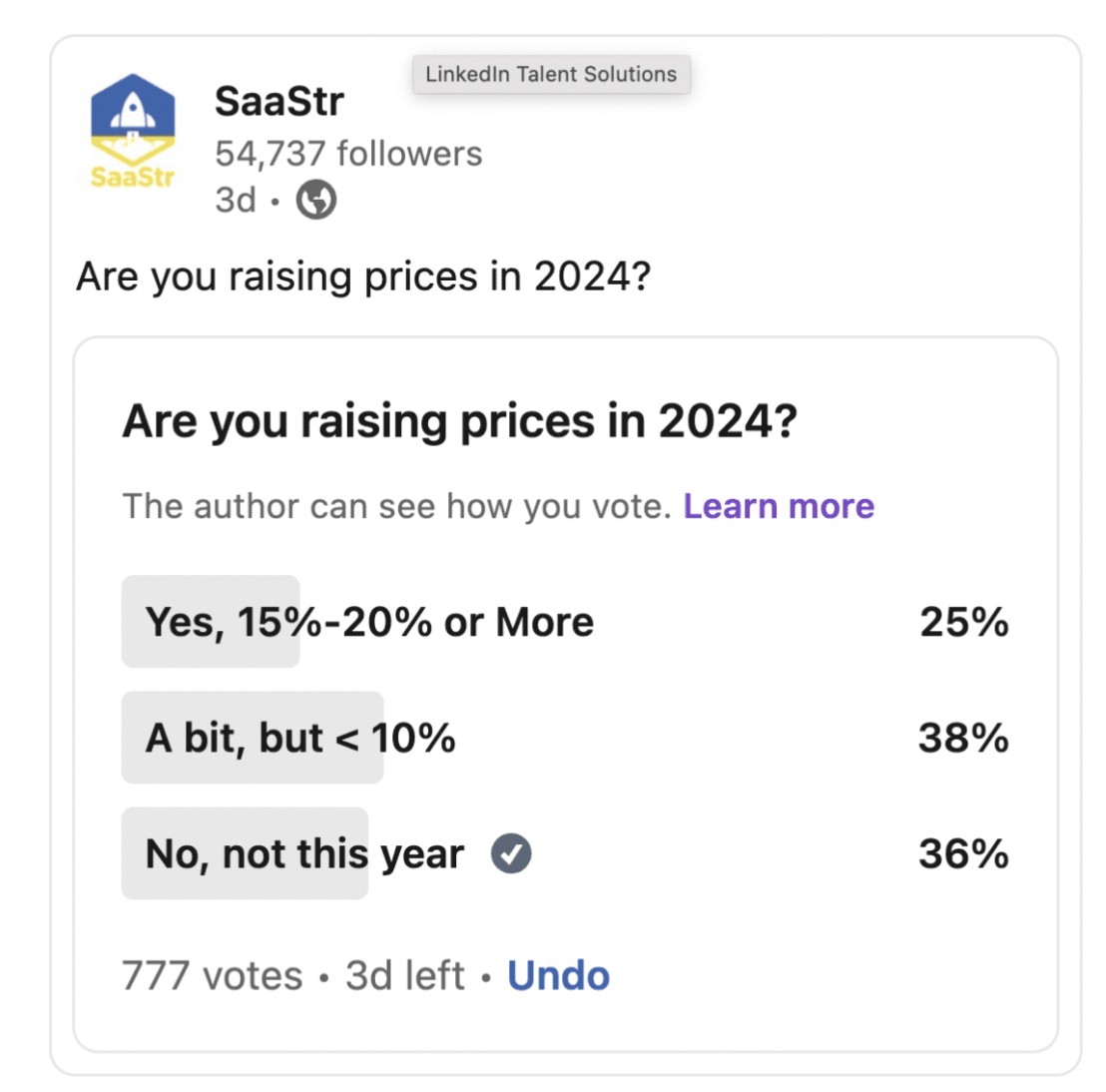Costs do not justify SaaS price increases - value does
Steven Forth is a Managing Partner at Ibbaka. See his Skill Profile on Ibbaka Talio.
SaaStr is one of the leading organizations supporting the SaaS and innovation sector. This is the thousands of companies that keep their software in the cloud and charge using some form of subscription or transactional model. SaaStr holds large events in Europe in June and the Bay Area in September. These have become cultural get-togethers for people in SaaS.
On Monday, March 25th, SaaStr founder Jason Lemkin shared a post ‘The New CRO’s First Job Now is To Aggressively Raise Prices. Be Wary.”
The CRO in question was trying to justify the price increase.
“We’re doubling prices”, the CRO said.
What? We asked why. He said “inflation”, and that “our costs are going up”. OK, but double?”
Jason was kind to the CRO with that ‘OK.’ He could have as easily said that their costs are also up so they are going to need a price cut. As soon as you open a cost-based conversation all sorts of consequences follow. What SaaS vendor wants to answer the following questions from a customer?
“What are your current costs?”
“What are you doing to cut costs?”
“How will this cost-cutting be passed on to us, the customer?”
Companies in manufacturing who sell parts and components to other companies are used to these questions and have strategies to answer them. SaaS companies do not.
SaaStr had another interesting post a few days before this (it is good to see the focus on pricing here). 73% of You Are Raising Prices in 2024.
If costs do not justify higher prices, what does?
The simple answer is value. And not just value in a general hand-waving sense. For pricing, the key consideration is differentiated economic value. If you have it, you probably have pricing power. If you don't, then price increases will probably increase churn.
So how do you know if you have differentiated economic value? You need to have a value model, specifically an EVE-type model that breaks out the specific ways your solution creates value and turns them into a simple system of equations.
Think of pricing in terms of two numbers:
The value you deliver to your customer, value to customer or V2C
The amount of value you should capture back in price, or the value capture ratio (VCR)
So before you raise prices make sure that you know how much value you are creating and that you can document that value with your customers.
Then decide how much of the value you should capture back. A good rule of thumb is 10%, which means that for every dollar a customer is investing with you they are getting ten dollars back.
If you are providing an essential system, that the customer must have to operate, and you have strong evidence of your value, you can aspire to a higher value capture ratio, 20% or in rare cases 30%.
Many SaaS companies are in a good position to raise prices. But they can only do so if they are providing value and can document the value.
Costs set a floor on how low your prices can go. But they are only a reason to raise prices if they are so low that you are not making reasonable financial targets.
Value is how you get to raise prices.






